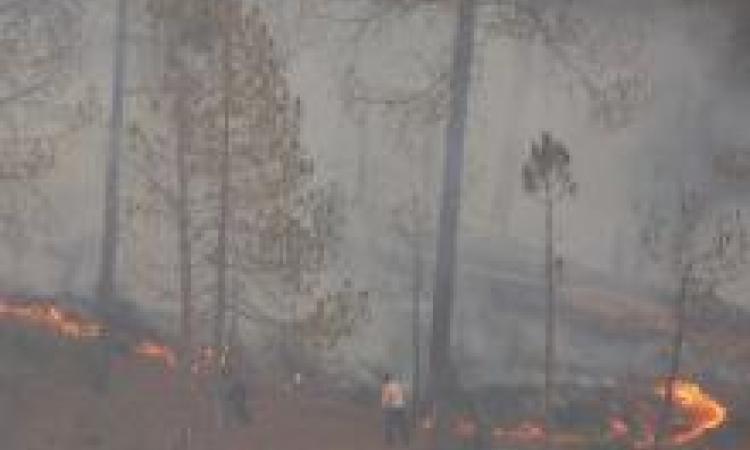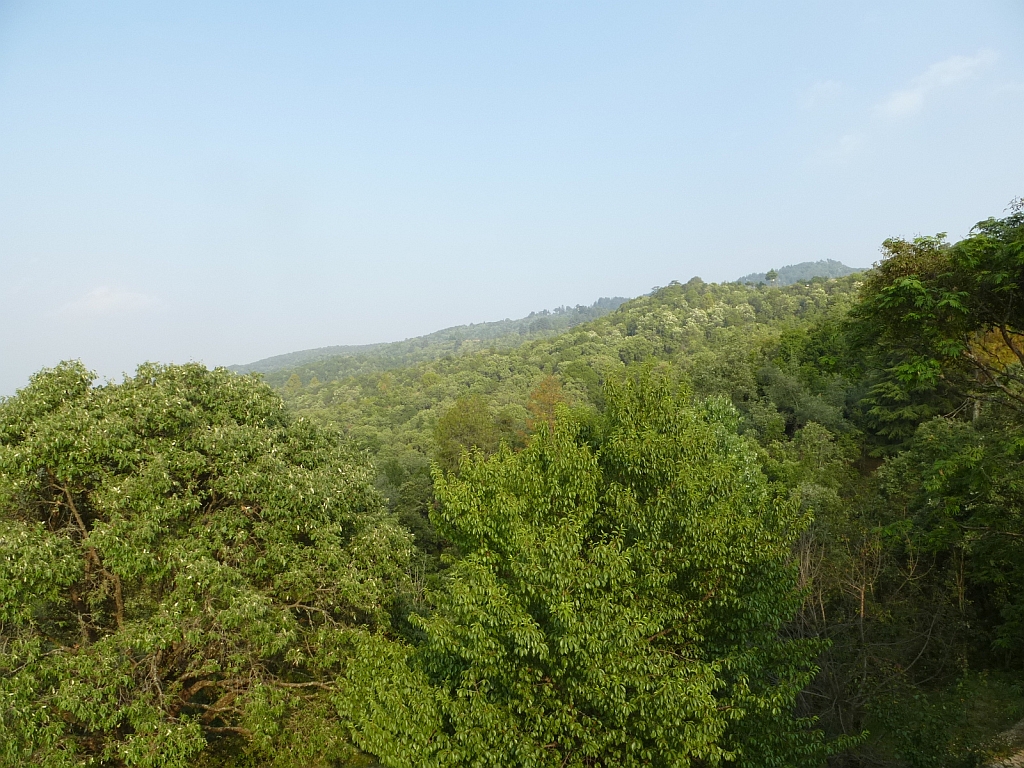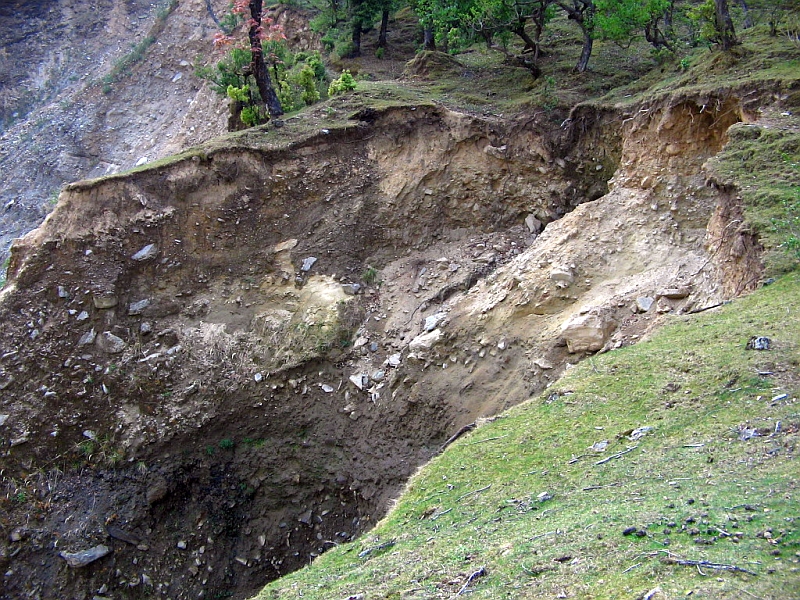
Uttarakhand is blessed with an immense amount of natural resources such as forests, wildlife and water, but if you are looking for some research-based information that quantifies, classifies and organizes this information, there isn’t much out there. This book, ‘Conserving resources in the Himalayas’, was written to document this data and to also acknowledge the work of many people who are actively involved in conservation efforts in the area – the government, academic organizatifons, NGOs and ordinary citizens. Written in the local language (Hindi), this book fills the gap that once existed for research-based writing on the Himalayan region that also presents the view of the Himalayan peoples.
“Our natural resources form the most important part of our earth. They have the capacity to satisfy all our needs and desires such as food, water, air and clothes. The Himalayas are rich in natural resources. Water, forests, flora and fauna are all abundant here. Due to the terrain they pack an incredible amount of biodiversity in a relatively small area. These are now under stress due to over-extraction. Conservation of these valuable resources is now crucial. The wise use, development and conservation of our natural resources is every individual's duty.”
The book is broadly classified into 5 parts: soil conservation, water conservation, forest conservation, mixed conservation and miscellaneous.
1. Classification of Himalayan land: Dr. SK Bandooni
The author argues that a piece of land must be analysed scientifically before it is used. It is important to study its characteristics and understand what could harm it. Failing to do this, might harm the land and even leave it unproductive. 9 sets of data are used to classify the Himalayas. These include slope, topography, vegetation, rainfall and land use patterns among others. The area is divided into six parts depending on the suitability of the land for particular uses such as irrigated and rain-fed agriculture, afforestation etc. The author has used published data as well as findings from his own research to classify the Alakananda basin per this method.
2. Land use classification of the Nanda-Devi biodiversity area: Dr. MS Pawar and Vijay Pokhriyal
As the title suggests, this paper examines the Nanda Devi biodiversity reserve. It begins with an overview of the geography, demographics (including livelihood practices) and the climate of the area. It explains the nuances involved in managing a biodiversity reserve, its impact and the resultant conflict. It ends with suggestions for better management of the reserved forest.
3. Growing vegetables and fruits in mountain areas using polyhouse technology: Dr. Harpal Singh Negi
Polyhouse technology is the use of plastic-sheeting to create a hot-house like protected environment where vegetables and herbs can be grown successfully. The article explains this process in great detail. As the second largest supplier in the global vegetable market, India must focus on the Himalayan areas to increase vegetable production. To do this, we must create vegetable and herb strains as well as develop agricultural techniques that are suited to the unique mountain situation, which is characterised by long cold winters, and increasing aridity.
4. Herb cultivation as a means of income: Dr. Harpal Singh Negi
Herbs can be used to supplement income, according to this paper. A table in the article lists the herbs best suited for various altitudes. The seven most recommended herbs, namely sarpagandha (Rauvolfia serpentina), safed musli (Chlorophytum borivilianum), brahmi (Bacopa monnieri), jatamansi (Nardostachys jatamansi), dhrut kumari (aloe vera), chirayata (Swertia chirata) and kutaki (Piccorrhiza kurroa) are described in detail along with methods to cultivate and harvest them.
5. Nature of land use in Rudraprayag: Reena Rawat and Anita Pharaswan
This paper explains the ways people in Rudraprayag district in Uttarakhand used land in a way that did not stress its natural resources such as water and forest. It also discusses strategies to meet increasing food, land and water needs due to rising population. Land use statistics, which present the extent of land used for agriculture, the area of forest cover, etc are shown in the tables that accompany this chapter.
6. Status and trends of agriculture and livestock rearing in Uttarakhand: Dr. Rakesh Chandra Gairola.
87% of the people in Uttarakhand practice agriculture and livestock rearing, says this paper. It also explains other related statistics such as the numbers of different animals in the state, areas where various crops are grown and cropping patterns that are followed. This chapter gives a comprehensive overview of these livelihood practices and the challenges they face due to their location. The author lists deforestation, road construction, unregulated grazing, soil erosion, intense rainfall, and human-animal conflicts as the chief challenges to growth in the area.
Water conservation
7. A gentle environmentalist of the Himalayas: Dr. SK Bandooni and Dr. Kaushal Kumar Sharma
Sacchidanand Bharti didn’t go looking for fame. It came to him because he worked silently and diligently towards a goal. This chapter acknowledges his work and states that instead of exploiting our forests and rivers in such a way that they are destroyed, we should manage them well so that future generations can benefit from them as well.
8. An overview of water management in Uttarakhand: Ramesh Pahari
This article contains data on the number of villages supplied with drinking water, extent of irrigated land, types and numbers of irrigation systems, length and volume of major rivers etc. Nearly half the habitation in Uttarakhand does not have access to piped drinking water, says this chapter, backing up its claim with relevant data. Similarly, only one-eighth of the cultivated land is irrigated. There are two reasons for this – one, lift irrigation from the rivers is not possible beyond a certain height and two, farmers are too poor to buy pumps and the size of their landholding doesn’t justify the investment either. The chapter also talks of hydropower and rainwater harvesting.
9. Contamination of groundwater: Janhit foundation
This chapter presents case studies that illustrate the problem of groundwater pollution in Uttar Pradesh. It begins by giving statistics on water availability and requirements in India. Despite the title, it also describes the causes and extent of pollution in the Ganga, the Hindan and other rivers. The chapter goes on to discuss groundwater pollution due to pesticides in Daurala (near Meerut in Uttar Pradesh), conflicts due to pollution of drinking water in JayBhimNagar (on the banks of River Kali in Uttar Pradesh), and industrial pollution in various areas near Meerut, among others. The impact of this pollution on health, especially incidents of cancer, skin ailments, cardiac trouble and gastro-intestinal complaints is discussed.
10. Dams are the temples of modern India: Sunil Kumar Sharma and Arvind Kumar Sharma
This chapter examines Jawaharlal Nehru's famous statement, “Dams are the temples of modern India”, and juxtaposes it with the real impact of dams on water resources and the people of India. This too, presents data pertaining to Uttarakhand, specifically related to dams, canals, and rivers including the number of dams, the height of each, the number and length of canals and rivers etc.
Forest Conservation
11. The role of mixed forests in biodiversity conservation: Jagat Singh Chaudhari 'Jangli'
In this chapter, the author speaks of his experiences with planting a variety of trees in the forests and on farms. The method of this mixed afforestation along with a list of recommended species of fodder plants, fuel and timber trees, fruit trees, medicinal plants, spices, herbs, perennial plants and trees, bio-fencing, flowers and other plants is presented in this article.
12. Role of Uttarakhand State and its residents in forest management: Arun Kumar Tripathi and Deep Narayan Pandey
The state and its people are dependent on each other; their cooperation is necessary to manage the region's forests so that the resources benefit the people without being over-used. The article begins with a description of Uttarakhand's geography, including its mountains and forests. It depicts the state of the forests in detail, listing the main threats as harvesting for fuel, uncontrolled grazing, dams and road construction, forest fires, and harvesting timber for housing. It lists ways to mitigate the impact of these threats and suggests long and short-term measures to safeguard forests. The short term measures include planting fast-growing species that will satisfy immediate needs of fuel etc. Long term measures are largely focused on developing appropriate policy measures.
13. Conservation management in Uttarakhand: Dr. VS Negi
Despite being rich in natural resources, Uttarakhand is not economically developed. The author explains the interlinking between soil, water and forest conservation and livelihood. He explains the role of the community, non-governmental organizations, government. The author recommends organic farming to ensure economic growth along with helping conserve resources. It ends with dos & don'ts for farming, animal husbandry, and forestry.
Mixed Conservation
14: Problems and management of soil, water and forest conservation in Himachal Pradesh: Acharya Ratna Lal Verma
The author warns us that in the search for 'development', we are moving away from harmony with nature and towards utter ruin. We need to understand the natural resources that we are squandering to realize their importance to our future. The article then describes Himachal Pradesh including the various crises facing land, water, and forests. The land that was once available to agriculture and forests is now taken over by mining and construction, which aggravates landslides. Himachal's rivers are polluted and dammed. The forests bear the brunt of increasing population as they are cut to make the way for new settlements. The author lists the reasons for these crises and the ways to overcome them.
15. The support of life in Himachal Pradesh: Sanjeev Sharma, Jitendra Sinha Butola, and Parul Sharma
The article states that water, forests and land are crucial for life in Himachal Pradesh. It goes on to describe the current state of these resources, challenges such as over-population and the resultant over exploitation, and means of overcoming these challenges. This article presents useful data about rainfall patterns, landslides and the density of trees in the state. It ends with recommendations for effective management of these resources.
16. Community-based livestock management in the Uttarakhand Himalaya: Dr. Lakshman Prasad Semwal and Jitendra Joshi
Several people in the Himalayas are dependent on the physically demanding task of managing livestock, especially sheep and goats. For social and economic progress in the region, it is necessary to include animal husbandry in policies and programmes designed for the state. The cottage industries related to animal husbandry such as the production of woollen products like thulma, pashmina and kambals is dying out. This chapter looks at the district of Tehri Garhwal and the community-based livestock management being practised there. It presents data on the various animals in the region, the uses to which they are put, and the facilities available for their care. The article also speculates on the reasons for the decline of animal husbandry and presents means of overcoming this decline.
17. Strategies of conservation and management in Uttarakhand (especially in the context of abandoned cows): Dr. Maheshwar Dutt
Uttarakhand has abundant natural resources in its fruits, minerals, water and livestock. It is also an upcoming tourist destination. Despite this, it is considered a poor state. The author speculates that one reason for this could be that cows are not preferred animals here. They are considered to be not very productive. The author however, points out the importance of cows and strongly argues for community-based cow-rearing.
Miscellaneous
18. Management of the natural disaster-prone areas in Uttarakhand: Dr. MS Pawar, Deviram BK and Prabhakar Gaur Due to its location, Uttarakhand is susceptible to natural disasters such as earthquakes, landslides, forest fires, drought, and floods, many of which are aggravated due to human activity. This article discusses ways to minimize the damage caused by these disasters. The article draws upon secondary data and information gained during field visits. The article presents a timeline of the major disasters to hit the area since 1894, along with the approximate losses faced. It presents management strategies to deal with the major types of natural disasters to affect the area.
Due to its location, Uttarakhand is susceptible to natural disasters such as earthquakes, landslides, forest fires, drought, and floods, many of which are aggravated due to human activity. This article discusses ways to minimize the damage caused by these disasters. The article draws upon secondary data and information gained during field visits. The article presents a timeline of the major disasters to hit the area since 1894, along with the approximate losses faced. It presents management strategies to deal with the major types of natural disasters to affect the area.
19. Natural disasters and disaster management in Chamoli district: Puja Negi and Deviram BK
Growing population and abuse of nature have led to an increase in the magnitude and frequency of disasters. This article draws upon information and data received from various sources to present an overview of disasters in Chamoli. It describes the history, geologic climate and demographics of the area. It also gives an overview of the disasters that Chamoli is prone to starting from the 1757 Srinagar earthquake to the Govindghat cloudburst in 2005. It ends with suggestions for coping with major expected disasters.
20. Role of self-help groups in natural resource management in Garhwal: Prof. SS Rawat and Dr. Sarita Pawar.
Garhwal is composed of Dehradun, Pauri Garhwal, Chamoli, Tehri, Uttarkashi, and Rudraprayag districts. As in the rest of the country, self-help groups are being given considerable encouragement and support through various programmes. The article explores this concept and presents a case study of the work done by GRASS (Grameen Sudhar evam Shramik Seva Sanstha) in the formation and development of self-help groups.
21. Tourism and biodiversity in the Himalaya: Suresh bhai
The unique characteristics of the Himalayas, its cultures and its biodiversity can form the basis for tourism directed at introducing visitors to the Himalayan way of life. This essay includes not only the diversity of the mountain peoples and their culture (including their cuisine!), but also the interdependence of people with their forests and land. The author emphasizes that this needs to be done in a way that employs locals, and improves local conditions.
The many tables in the book contain data about the geography, demographics, natural resources, and natural disasters of Uttarakand. If you crave data, this book is perfect for you!
Date of publication: 2009
Publisher: Research India press
/articles/book-review-conserving-resources-himalayas